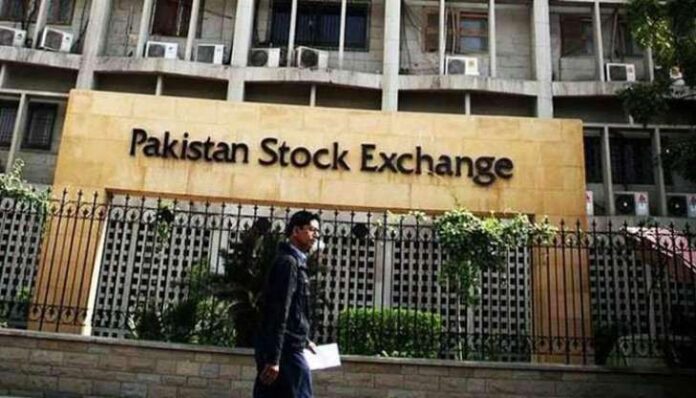KARACHI: The Pakistan Stock Exchange (PSX) witnessed volatility throughout the outgoing trading week, as the benchmark KSE-100 Index changed directions on a daily basis before closing 341 points higher at 37,925.79, thanks to 824-point rally on Friday.
Over the course of the week, foreign investors bought shares worth $8.4 million, which in turn contributed to the total volume of shares amounting to Rs33 billion.
Earlier this week, State Bank of Pakistan Governor Reza Baqir had hinted at maintaining the status quo in the monetary policy, which provided much-needed clarity and helped the bourse trade in the green zone.
In the monetary policy announcement, the State Bank of Pakistan kept the interest rate unchanged at 13.25pc.
The SBP had said that the market sentiment has begun to gradually improve on the back of sustained improvements in the current account and continued fiscal prudence.
It said that the current account balance recorded a surplus in October 2019 after a gap of four years, a clear indication of receding pressures on the country’s external accounts. “The end of deficit monetisation has qualitatively improved the inflation outlook.”
RUPEE RECOVERS
Pakistani Rupee appreciated 10-paisa in interbank against the US Dollar during the outgoing week, closing at Rs155.27 on Friday.
Likewise, in the open market, it was traded at Rs155.40 against the greenback with slight fluctuations during the week.
In the last three months, the local currency was observed to recover against the greenback in both interbank and open markets.
Analysts had expressed fear that the intense ongoing trade war between the United States and China could result in fluctuation of the US dollar in the local market, and the value of the Pakistani rupee could stabilise depending on the measures taken by the government with appropriate economic policies.
Currency traders were of the view that the increasing inflows of remittance have supported the local rupee in the market.
Until June this year, the rupee was observed to cumulatively depreciate against the greenback, which in turn had resulted in increased prices of goods and hardships for the general public.
























